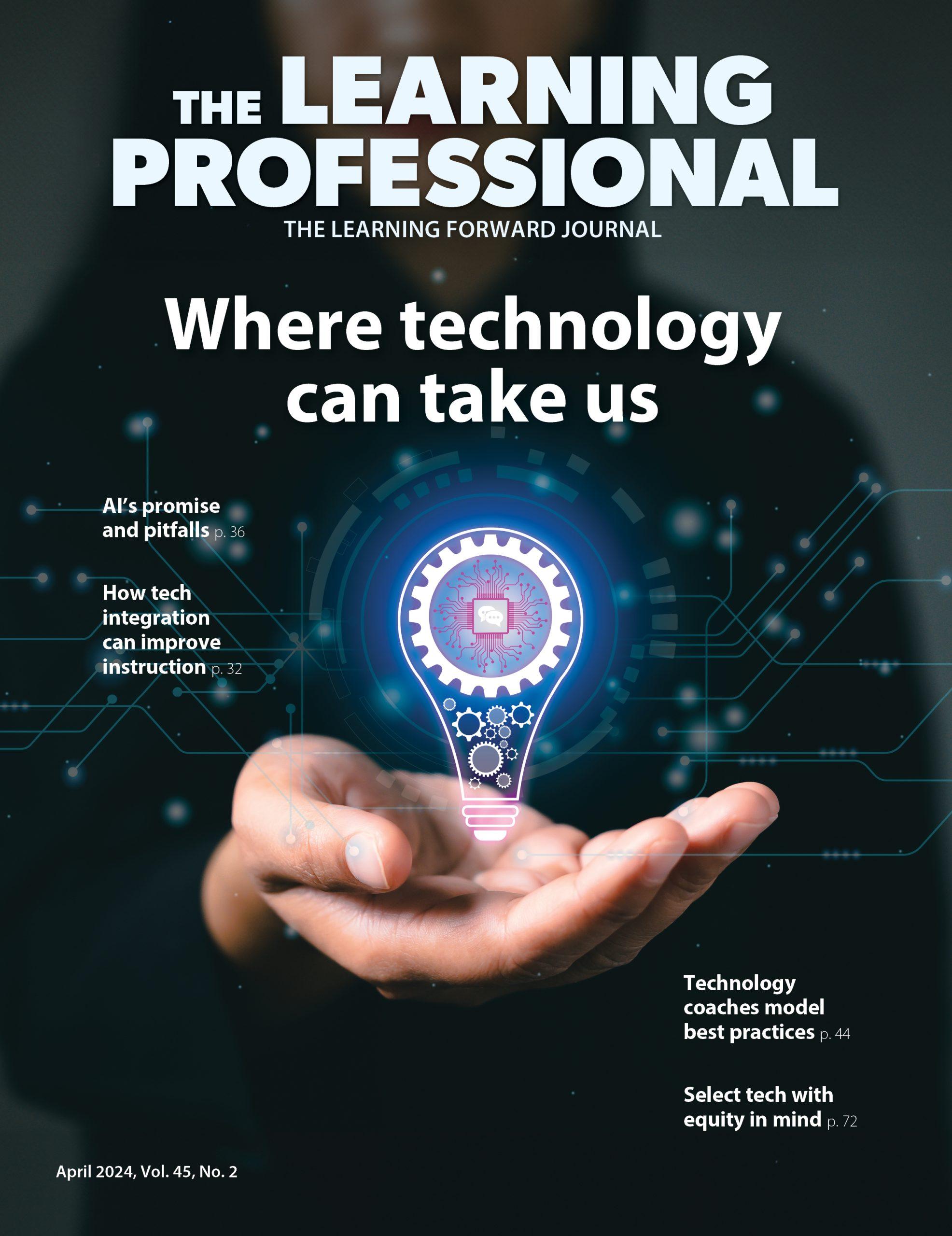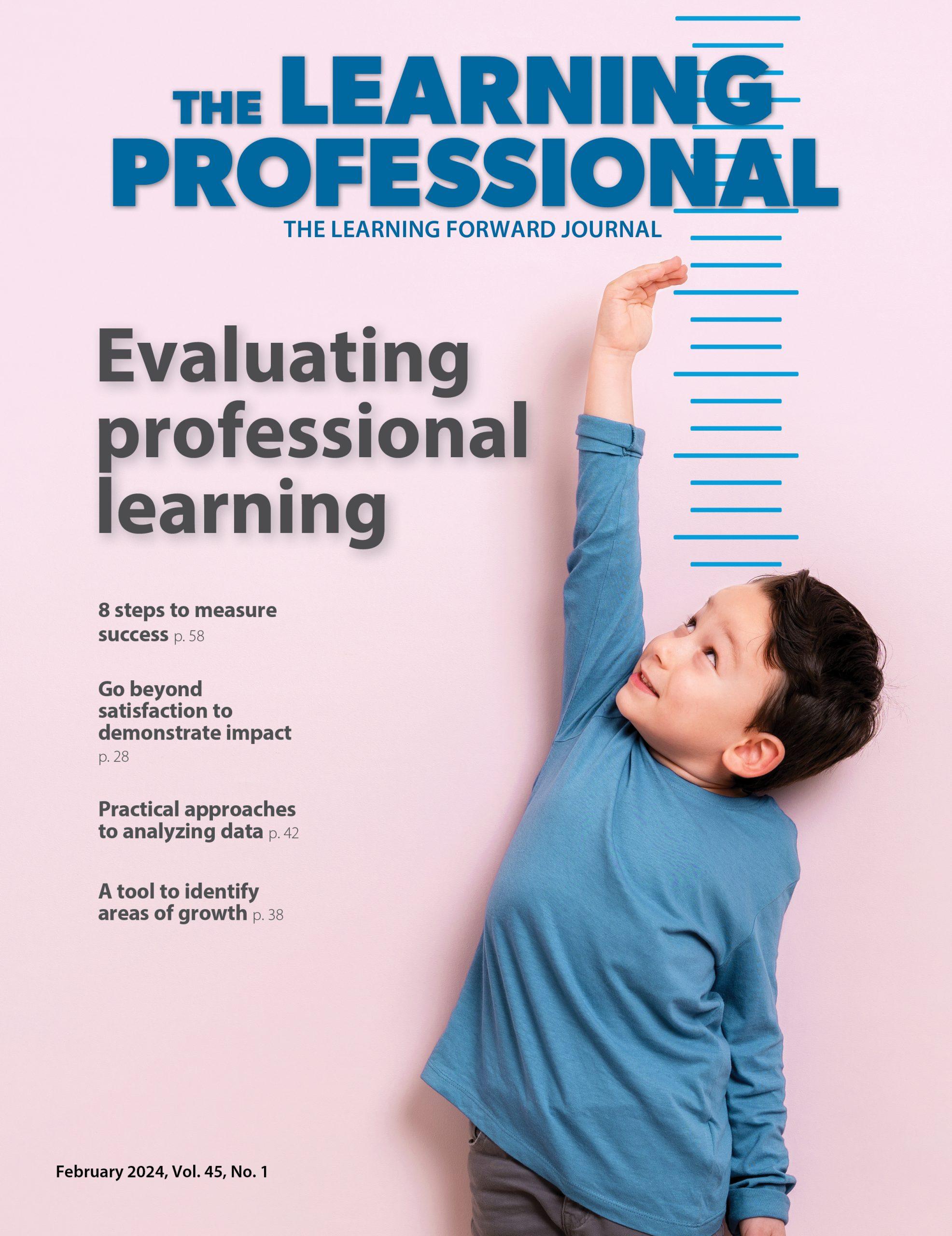Collaborative Culture
A willingness to speak the truth serves as a call to action and an important first step
By Learning Forward
Categories: CollaborationApril 2012
Vol. 33 No. 2
13Shortly after coming to Rose Elementary School, our site leadership team had a retreat. We assembled off-campus in La Jolla, Calif., the socioeconomic antithesis of our school community, to ride Segway personal scooters. As a school in the midst of a professional learning initiative, we needed to get from the proverbial point A to point B, but in an expeditious and innovative manner. The Segway ride was analogous to this journey. We needed to move, we needed to move fast, and we needed to move forward in an innovative and expeditious manner.
At the conclusion of our two-hour tour, we assembled in a rustic hut near a cliff. We had read the first two chapters of Fierce Conversations and were prepared to discuss our perceptions. Our team reviewed some of the initial offerings at the beginning of the book — the corporate nod, beach ball reality — yet it felt as if we were offering an academic overview of what we’d read — recounting text, but not revealing what had resonated or might be relevant to our school. I asked, “What are we pretending not to know?” There was silence. Then one team member said, “We’re pretending … that we have nothing to do with our students’ test scores.” It was a ground truth and the genesis of much to follow.
I choose to introduce Fierce Conversations to my leadership team because I knew that if we could not have real and relevant conversations, nothing else would matter. We would stay stuck in “nice” and be rendered incapable of tackling what was necessary. We needed to learn to have real and relevant conversations. But where should we begin?
It could be said that there is a personality profile for those of us who pursue a career in a helping profession. We are generally genial, accommodating, inclusive, and, all too often, conflict-averse. Noble characteristics, surely, but not necessarily conducive to the kinds of conversations we now knew we needed to have. We had to discuss the undiscussables, and there was a palpable anxiety and apprehension at the prospect of this undertaking. Our conversation continued at more than one meeting. There were additional questions, more requests for clarity, and some discussion of next steps. Our team appeared to be simultaneously poised on the cusp of a commitment and paralyzed. I was perplexed.
Waiting for Permission
At some subconscious level, this push-pull dynamic was familiar to me, but it took a few minutes for me to recall when I’d last experienced it. I soon recognized it was analogous to my experience as a classroom teacher in the 1980s. We were moving from a traditional didactic delivery of instruction to a model that provided opportunities for cooperative learning. As a teacher, I’d articulated the tenets of cooperative learning, reviewed the roles of responsibilities of each team member, and outlined expectations for the outcome. My students’ excitement was obvious. They appeared eager to embrace this new construct, and yet, once seated with their cooperative partners, they were immobilized as if confronted by an invisible wall between them and the task at hand. I asked them what they were waiting for, and the reply was startling. “Permission.” Permission to behave in a way they had never behaved in order to attain an outcome that had previously eluded them. The connection could not have been clearer.
At some level, our staff equated respect for the site-level administrator as synonymous with silence. As principal, I needed to tell my teacher leaders, in clear and incontrovertible language, that it was not only OK to embark on these kinds of conversations, it was an expectation and imperative we do so if we were to effect change. This clarification paved the way. We were ready for our next step.
One of the first practices we committed to put into place was replacing the word “but” with “and.” Each is a one-syllable, three-letter word, but they bring two very different truths to the table. As Susan Scott explains, “but” presents competing realities and the unarticulated expectation that one option will be eliminated. I win, you lose. “And” allows us to avoid blame and opens the door to exploration and an opportunity for a completely different outcome. This seemingly small transition gave us traction for our next steps.
There was some significant trepidation surrounding those first forays into a fierce conversation. Being nice was what tethered us, one to the other, and there was little desire to risk the relationship. The primary concern our team members articulated was wrapped around fear — fear the relationship would not survive a confrontation and all that entailed. We came to recognize, though, that if we continued to choose to perpetuate this pattern of avoidance, we were, in essence, saying, “Your feelings as an adult are more important that the needs of these students.” This epiphany was a call to action.
We were willing, but not yet able. How do you make that happen? Fierce provided some common core strategies, which we used to create capacity, first with our leadership team and later with the staff at large.
Our leadership team started from a place of purpose. Although an anticipated outcome in virtually any interaction can be ambiguous, an intention is not. You are well-meaning or you’re not. You approach a problem for a greater good or in an effort to establish your dominance. We opt for the former every time, and it has empowered us to walk toward a situation with greater clarity and purpose.
The mineral rights protocol creates a construct for tackling tough issues. Two powerful steps in the process are identifying the current impact and determining future implications. To my surprise, I found I often interpreted situations in a different light when I pushed past my focus on the here and now and considered the future ramifications if I’d opted for inaction.
The decision tree protocol cultivates autonomy and ownership and frees the site-level administrator from being the sole source of action.
There are a series of questions in the one-to-one protocols that cause my greatest personal and professional growth. As an administrator, I have to guard against my inclination to default to principal-as-problem-solver. It requires enormous internal fortitude for me to use questions only and is doubly difficult for me to refrain from declarative statements. It’s in my nature to proclaim! When I choose one or two questions to frame a discussion, it creates a space for me to listen. When I listen, I learn.
Real and Relevant Conversations
As the instructional leader of Rose Elementary, I am the recipient of many gifts. One thing I hold most dear is the receptive nature of my colleagues. This is a staff that is easy to love. They are hard-working, open to change, care about one another, and operate from a sense of servant leadership to the children they teach.
Our instructional efforts are critical to our success, yet our transformation cannot transpire solely as a result of posting instructional objectives, embracing a novel approach to vocabulary, or diligently incorporating the use of math manipulatives. Our transformation will be attributed to those efforts coupled with the trust and transparency we’ve established as a result of being authentic in our interactions. Our transformation will be a result of the choices we have made to engage in real and relevant conversations every day.
The Segway is an amazing invention. Lean slightly to the right or left and it moves in that direction. Hesitate and it stops, quivering beneath the rider like a horse anticipating the nudge of a knee. Our conversations are equally responsive to subtle signals, particularly from the person who calls a meeting. How much truth shall we tell today? A little bit, just enough to make us nervous? None at all, to keep us temporarily safe, while our fate unfolds before us? Or, like Deb Ganderton, will you give permission to lean forward and navigate quickly, as best you can, toward the heart of the matter?
— Susan Scott
Learning Forward is the only professional association devoted exclusively to those who work in educator professional development. We help our members plan, implement, and measure high-quality professional learning so they can achieve success with their systems, schools, and students.
Categories: Collaboration
Recent Issues
LEARNING TO PIVOT
August 2024
Sometimes new information and situations call for major change. This issue...
GLOBAL PERSPECTIVES
June 2024
What does professional learning look like around the world? This issue...
WHERE TECHNOLOGY CAN TAKE US
April 2024
Technology is both a topic and a tool for professional learning. This...
EVALUATING PROFESSIONAL LEARNING
February 2024
How do you know your professional learning is working? This issue digs...








